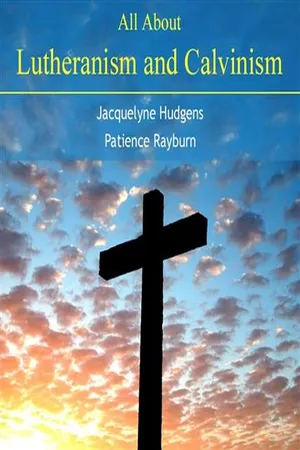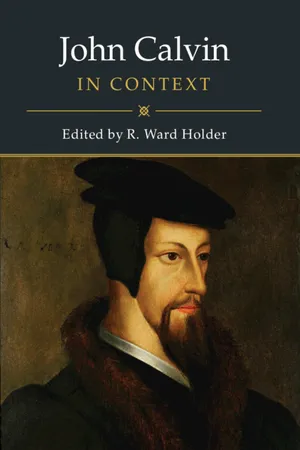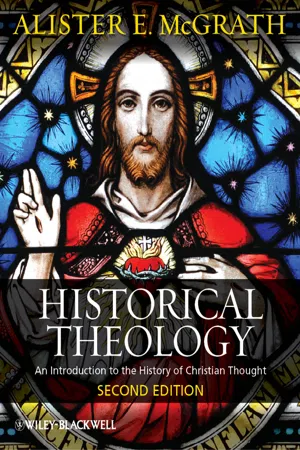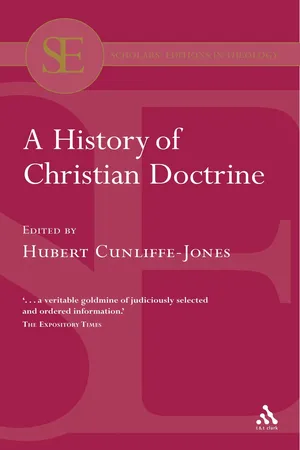History
The Spread of Calvinism
The spread of Calvinism refers to the dissemination of the Protestant theological system developed by John Calvin. It gained traction in various European countries during the Reformation, particularly in Switzerland, Scotland, the Netherlands, and parts of France. Calvinism's influence extended to the New World through the migration of European settlers, contributing to the shaping of religious and cultural landscapes in regions such as North America.
Written by Perlego with AI-assistance
Related key terms
1 of 5
4 Key excerpts on "The Spread of Calvinism"
- No longer available |Learn more
- (Author)
- 2014(Publication Date)
- College Publishing House(Publisher)
________________________ WORLD TECHNOLOGIES ________________________ Chapter 5 Introduction to Calvinism Calvinism (also called the Reformed tradition , the Reformed faith , or Reformed theology ) is a theological system and an approach to the Christian life. The Reformed tradition was advanced by several theologians such as Martin Bucer, Heinrich Bullinger, Peter Martyr Vermigli, and Huldrych Zwingli, but this branch of Christianity bears the name of the French reformer John Calvin ( Jean Cauvin in old French) because of his prominent influence on it and because of his role in the confessional and ecclesiastical debates throughout the 16th century. Today, this term also refers to the doctrines and practices of the Reformed churches of which Calvin was an early leader. Less commonly, it can refer to the individual teaching of Calvin himself. The system is often summarized in the Five Points of Calvinism and is best known for its doctrines of predestination and total depravity, stressing the absolute sovereignty of God. Historical background John Calvin ________________________ WORLD TECHNOLOGIES ________________________ John Calvin's international influence on the development of the doctrines of the Protestant Reformation began in 1534 when Calvin was 25. That marks his start on the first edition of Institutes of the Christian Religion (published 1536). He revised this work several times, and produced a French vernacular translation. The Institutes , together with Calvin's polemical and pastoral works, his contributions to confessional documents for use in churches, and his massive outpouring of commentary on the Bible, meant that Calvin had a direct personal influence on Protestantism. Along with Martin Bucer, Heinrich Bullinger, Peter Martyr Vermigli, and Ulrich Zwingli, Calvin influenced the doctrines of the Reformed churches. He eventually became the most prominent of those reformers. - eBook - PDF
- R. Ward Holder(Author)
- 2019(Publication Date)
- Cambridge University Press(Publisher)
From liberal Protest-ants to Karl Barth, Baptists to the new Calvinists, a broad spectrum of inter-preters, adherents, and critics have been attracted to the writings of the French reformer. Further, with the massive expansion of churches in the Global South and majority world Calvin ’ s works have found new audiences in varied ecclesi-astical contexts, from Korea and China to Africa. Translations proliferate while virtually all the reformer ’ s works are now readily available online. It will hardly surprise that schools of Calvin interpretation in the West during the twentieth century have rarely proved easy to demarcate. Distinc-tions such as liberal or conservative are of little assistance for understanding the central role played by the reformer in the development of Reformed thought. Indeed, we should proceed with a number of caveats, beginning with the recognition that the Frenchman ’ s work was never read in isolation; it was always located within a particular context. Next, as was ever the case, the invoking of the name John Calvin or of his theology is something quite separate from serious engagement with his writing. Like other great works of Christian theology, the Institutes of the Christian Religion remains a book far more often referenced than read. For many students and laypeople, their sole encounter with this literary masterpiece is through a decontextualized read-ing of Calvin ’ s treatment of predestination in the third book. Consequently, it is not straightforward to track the reformer ’ s in fl uence in the labyrinthine world of twentieth-century theological debates, education, and church life. We should remain justly suspicious of all claims to have recovered the 427 “ authentic Calvin ” from the Reformation and to have identi fi ed how he is to be applied to the contemporary world. - eBook - PDF
Historical Theology
An Introduction to the History of Christian Thought
- Alister E. McGrath(Author)
- 2012(Publication Date)
- Wiley-Blackwell(Publisher)
Indeed, Calvin’s Institutes may be regarded as a work of “biblical theology,” bringing together the basic ideas of Scripture into an orderly presentation. However, in the writings of Theodore Beza, Calvin’s successor as director of the Genevan Academy, there can be seen a new concern for questions of method, as noted above. The logical arrangement of material, and its grounding in first principles, comes to assume paramount importance. The impact of this development is perhaps most obvious in the way in which Beza handled the doctrine of predestination, to be noted later. 2. The development of works of systematic theology. The rise of scholasticism within Lutheran, Calvinist, and Roman Catholic theological circles led to the appearance of T H E R E F O R M A T I O N A N D P O S T - R E F O R M A T I O N P E R I O D S , 1 5 0 0 – 1 7 5 0 133 vast works of systematic theology, comparable in many ways to Thomas Aquinas’s Summa Theologiae. These works aimed to present sophisticated and comprehensive accounts of Christian theology, demonstrating the strengths of their positions and the weaknesses of those of their opponents. Post-Reformation Movements The Reformations, both Protestant and Catholic, were followed by a period of theological consolidation within both movements. Within Protestantism, both Lutheran and Reformed (or “Calvinist”), the period known as “Orthodoxy” opened up, characterized by its emphasis on doctrinal norms and definitions. Although sympathetic to this doctrinal trend, Puritanism placed considerably greater emphasis on spiritual and pastoral application. Pietism, in contrast, was hostile to this emphasis on doctrine, feeling that the stress on doc- trinal orthodoxy obscured the need for a “living faith” on the part of believers. - eBook - PDF
- Hubert Cunliffe-Jones(Author)
- 2006(Publication Date)
- T&T Clark(Publisher)
These scholars maintain that the subsequent dog-matic formulae of the Reformed Churches and the writings of their leading theologians have seriously distorted Calvin's teaching; by beginning with the doctrine of God and his eternal decrees of predestination and reproba-tion the Gospel was depersonalized and transformed from Good News to arid logic. 5 Yet it is in Book II of Calvin's Institutes, before he has reached the doctrine of Christ, that he says It is God's election which so distinguishes among men. — It is through God's mercy that not all remains in wickedness. — Only those whom it pleases the Lord to touch with his healing hand will get well. The others whom he in his righteous judgment passes over waste away in their own rottenness until they are consumed. 6 On the other hand, Turretin could reveal a warmth which belies to some extent his aridity; he said that God who had written the names of the elect in the book of life had also 'written the transcript of our election in the book of conscience and on tablets not of stone but of human hearts, not with ink but with the spirit of the living God by inscribing grace and law on our souls that he may assure us of his eternal love and of his everlasting care and protection'. 7 On the fringe of the Reformed Churches and of the Lutheran Churches was the Socinian movement. Indeed, the only affinity between it and these Churches was a common rejection of the claims of the Church of Rome. Its distinctive teachings only help to show how small were the differences 1 ib. 410. 2 id. 451-3. 3 ib. 449-4 See supra, p. 436. 5 e.g., see G. E. Duffield (ed.), John Calvin. 6 Institutes, II, v, 3. 7 Beardslee, op. cit., 396. 44° A History of Christian Doctrine within and between these Churches. Socinianism took its name and teaching from Lelio Francesco Sozzini (d. 1562) and his more famous nephew, Fausto Sozzini (d. 1604).
Index pages curate the most relevant extracts from our library of academic textbooks. They’ve been created using an in-house natural language model (NLM), each adding context and meaning to key research topics.



